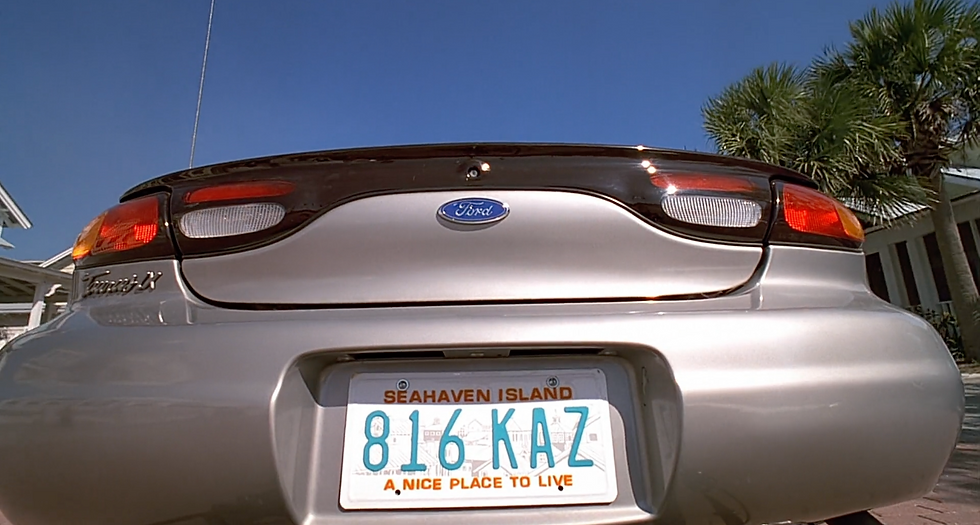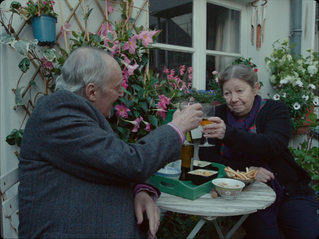American Dream and Nightmare: Suburbia in Film
- Isobel Wise
- Feb 7, 2019
- 4 min read
Updated: Aug 16, 2020
‘Little boxes on the hillside, Little boxes made of ticky-tacky, Little boxes on the hillside, Little boxes all the same. There’s a green one and a pink oneAnd a blue one and a yellow one, And they’re all made out of ticky-tacky, And they all look just the same.’ – Malvina Reynolds, 1962
As pro-suburban policies were launched in conjunction with a national construction program of 1945, suburbs sprouted all over America and increased the attainability of the American Dream. Surviving from frontier to front-line, this ethos saw nuclear families in pastel neighbourhoods supplanting the horrors of war with their picket fences, Tupperware parties, and flowerbeds.
William Levitt, hailed as the ‘father of suburbia’, developed a scheme with his firm Levitt & Sons that allowed them to build mass-producible and inexpensive housing for the flood of returning veterans in America. In the three separate developments of New York (1947-51), Pennsylvania (1952-58) and New Jersey (1958), the firm offered small houses that could be built in just one day. Despite the modern approach to assembly, the homes themselves strayed little from the conventions of house design upheld by Americans at the time. The structures were revolutionary in their construction, but nostalgia was manifest in their appearance. Within the settings of the ‘Colonial’ or ‘Ranch’ type, the lives of nuclear families were aided and improved by efficient, hygienic and top-of-the-range appliances. Returning from the horrors of war, the veterans were awarded with domesticity.

A neighbourhood of Jubilee models, Levittown, Pennsylvania, c. 1953
However, due to the standardisation of the Levittown houses, the homogeneity of the streets became a popular criticism. As Levitt sorted his residents by income, each house-type was grouped by neighbourhood, rendering swathes of streets indistinguishable. The long history of racial segregation further upturns this narrative of a suburban utopia. The development in New York was founded on the basis that it was only available to white people alone. Indeed, this stipulation was written into the house contracts by Levitt stating, ‘no dwelling shall be used or occupied except by members of the caucasian race’. Sales agents were advised to turn away black families and automatically register their applications as unsuccessful. Even after the states enforced a non-discrimination law, sales agents located the black applicants away from their white neighbours. The homogeneity of the residents is thus facilitated by this aim to constitute a community with a specific racial identity.

The suburban landscape of Levittown, New York, c. 1952
The little boxes of American suburbia are some of film’s most frequented locations, its homogeneity frequently rendering the protagonist or narrative as extraordinary in comparison. In films that centre around a singular character, think Carrie, Donnie Darko and The Truman Show, the protagonists display their deviation within a stifling suburban setting.
In Carrie (1976) (dir: Brian de Palma), the title character faces unanticipated menstruation, peer-bullying, and abuse from her Christian fundamentalist mother. Carrie Whites’s telekinetic powers are the ultimate deviation from the claustrophobic household and school her mother and peers respectively enforce. Following Carrie’s murderous revenge and the burning down of her house, the final scene begins with an opening shot of suburbia. Birds sing and the sun casts shadows on a manicured lawn. The scorched plot where the White house once stood is set up as its inverse. This contrast serves as a reminder of suburbia’s nightmarish potentiality, one that is shown in the final scene, to still haunt the sole survivor of Carrie’s rage.

Carrie (1976) (dir: Brian de Palma)

Carrie (1976) (dir: Brian de Palma)
In Donnie Darko (2001) (dir: Richard Kelly), suburbia is first introduced as a landscape of mundane yet tranquil normality. In the opening scene, Darko cycles through the streets, the camera panning to the morning joggers. Darko’s father is shown blowing leaves off his lawn, and his sister plays on a trampoline. Immediately Darko is set up as the anomaly – an adolescent who frequents a psychotherapist, disturbs classes, and treats his family with hostility. Again the underside of suburbia is unleashed. The tranquility first introduced is done away with by the end of the film and instead suburbia is set as the home of supernatural powers, multiple universes and sexual deviants.

Donnie Darko (2001) (dir: Richard Kelly)

Donnie Darko (2001) (dir: Richard Kelly)
In The Truman Show (1998) (dir: Peter Weir), suburbia is a simulation. As a product of a corporation, the life of Truman Burbank is broadcasted live around the world as reality entertainment. Here suburbia is not intended to be residential. Instead, cameras are hidden within each wall and suburbia is presented as the ultimate facilitator of voyeurism. When Burbank realises the reality of his situation, this realisation marks his deviation from the suburbia. He becomes transgressive, determined and defiant, assets the suburban simulation attempted to suppress.

The Truman Show (1998) (dir: Peter Weir)

The Truman Show (1998) (dir: Peter Weir)
The placidity regularly assigned to suburbia is exploited in the genre of horror. Films like Halloween (1978) (dir: John Carpenter) set the horrific actions of Michael Myers within the sleepy streets of Haddonfield. Get Out (2017) (dir: Jordan Peele) subverts this in the setting of the Armitage country-estate. However, despite its isolation, the systematic racism and manicured appearance of the estate seem Levittownian in their presentation.

Halloween (1978) (dir: John Carpenter)

Get Out (2017) (dir: Jordan Peele)
American Beauty (1999) (dir: Sam Mendes) has been described by critics as a satire of middle-class notions of beauty, sexuality, materialism and personal satisfaction. In the opening monologue, Lester Burnham introduces his suburban place of residence with contempt:
‘This is my neighbourhood. This is my street. This is my life. I’m 42 years old. In less than a year, I’ll be dead … And in a way I’m dead already’.

American Beauty (1999) (dir: Sam Mendes)
Films like Edward Scissorhands (1990) (dir: Tim Burton) and The Virgin Suicides (1999) (dir: Sofia Coppola) use suburbia to emphasise the abnormality of their central storyline. In the former, Edward’s behaviour, appearance and physicality are stark contrasts to the pastel utopia of the suburb. As the film progresses, his disruption to the homogeneity of the community ultimately results in his eviction by mob force. In the 1999 film, it is the suicide of the youngest daughter that disrupts – the setting of suburbia heightening the atypicality of her action.

Edward Scissorhands (1990) (dir: Tim Burton)

The Virgin Suicides (1999) (dir: Sofia Coppola)
For Levitt, suburbia offered security. In film, that veneer is firmly pulled back.








Comments